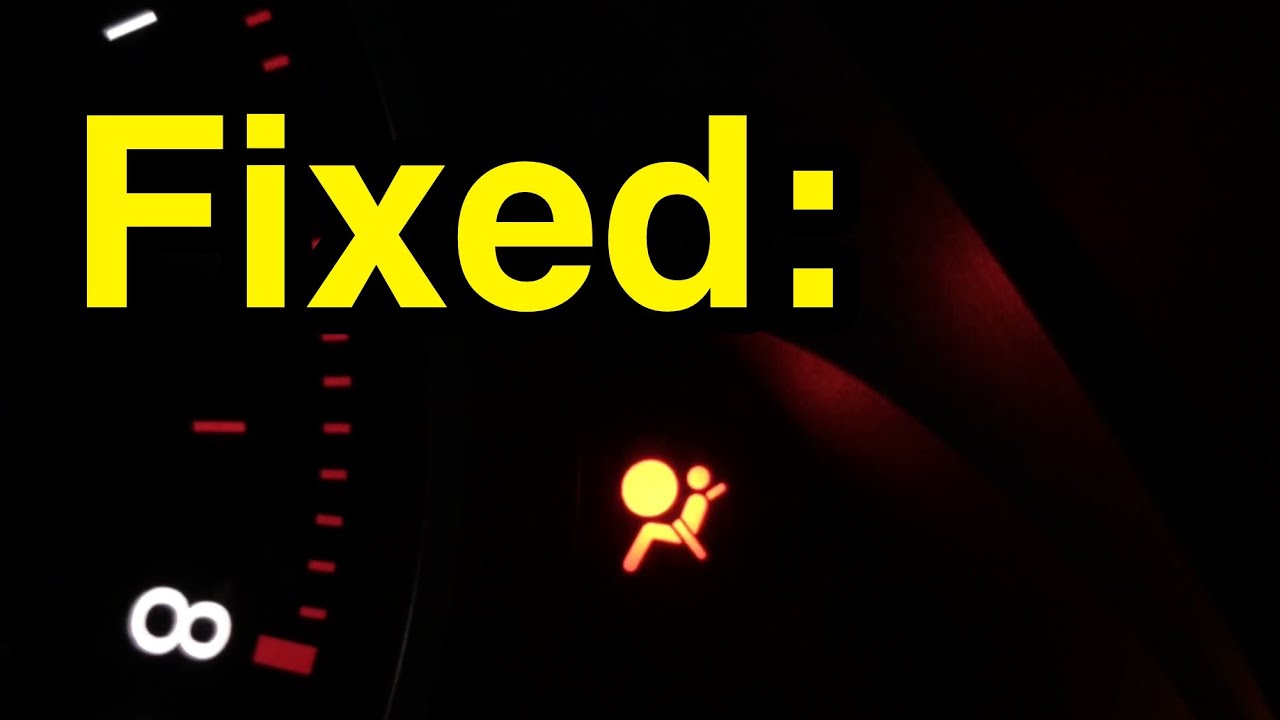Lifestyle
How to fix airbag error: A detailed guide

Airbag systems are crucial for vehicle safety and are designed to protect occupants during collisions. When an airbag error appears on the dashboard, it indicates a potential issue with the airbag system that requires immediate attention.
Understanding how to fix airbag error not only ensures safety but also integrates seamlessly into a responsible and safety-conscious lifestyle.
This guide provides detailed steps to diagnose and address common airbag errors.
Understanding airbag error indicators
Modern vehicles are equipped with onboard diagnostics that monitor the airbag system. When a problem is detected, the airbag warning light illuminates on the dashboard.
Common causes of airbag errors
- Faulty airbag sensors: Sensors detect collisions and trigger airbag deployment. Damage or malfunction can cause errors.
- Damaged clock spring: The clock spring maintains electrical connections in the steering wheel. Wear can lead to airbag warnings.
- Loose or corroded wiring: Electrical connections to the airbag system may become loose or corroded over time.
- Previous deployment: If the airbag has previously been deployed and not properly reset, errors will occur.
- Malfunctioning airbag module: The control module manages the airbag system; faults can trigger error codes.
Safety precautions before proceeding
- Disconnect the battery: Always disconnect the negative terminal of the battery before working on the airbag system to prevent accidental deployment.
- Wait before working: After disconnecting the battery, wait at least 15 minutes to allow residual power to dissipate.
- Consult the vehicle manual: Refer to the manufacturer’s guidelines specific to the vehicle model.
How to fix airbag error
Encountering an airbag error can be concerning, as it directly impacts vehicle safety. This tutorial provides step-by-step guidance to diagnose and fix common airbag issues, ensuring the system operates as intended and keeps you safe on the road.
1. Use an OBD-II scanner to read error codes
An onboard diagnostics (OBD-II) scanner can read specific error codes from the vehicle’s computer.
- Step 1: Connect the OBD-II scanner to the diagnostic port, usually located under the dashboard.
- Step 2: Turn the ignition to the “ON” position without starting the engine.
- Step 3: Follow the scanner’s instructions to read the error codes.
- Step 4: Note the codes related to the airbag system for further troubleshooting.
2. Inspect airbag sensors
Faulty sensors are a common cause of airbag errors.
- Step 1: Locate the airbag sensors, typically situated in the front bumper or engine compartment.
- Step 2: Check for physical damage, corrosion, or loose connections.
- Step 3: Clean corroded terminals with an electrical contact cleaner.
- Step 4: Replace damaged sensors following the manufacturer’s instructions.
3. Examine the clock spring
The clock spring connects electrical components to the steering wheel.
- Step 1: Remove the steering wheel cover carefully to access the clock spring.
- Step 2: Inspect the clock spring for signs of wear, damage, or disconnection.
- Step 3: If faulty, replace the clock spring with a new one compatible with the vehicle model.
4. Check wiring and connections
Loose or corroded wiring can interrupt the airbag system’s operation.
- Step 1: Inspect all wiring harnesses connected to the airbag system.
- Step 2: Ensure all connectors are secure and free from corrosion.
- Step 3: Repair or replace damaged wires using appropriate tools and materials.
5. Reset the airbag control module
Resetting the airbag module can clear error codes if the issue has been resolved.
- Step 1: After fixing any physical issues, reconnect the battery.
- Step 2: Use the OBD-II scanner to clear the error codes.
- Step 3: Turn off the ignition and disconnect the scanner.
- Step 4: Start the vehicle to see if the airbag warning light remains off.
6. Replace the airbag control module
If the module itself is faulty, replacement may be necessary.
- Step 1: Locate the airbag control module, often under the center console or dashboard.
- Step 2: Disconnect the module carefully, noting the wiring connections.
- Step 3: Install the new module, ensuring all connections are secure.
- Step 4: Program the new module if required, following the manufacturer’s procedures.
7. Seek professional assistance
If unable to resolve the airbag error, professional help is recommended.
- Certified technicians: Consult a certified mechanic with experience in airbag systems.
- Dealership service: Visit the vehicle’s dealership for specialized diagnostics and repairs.
Preventing future airbag errors
Regular maintenance, prompt attention to warning lights, and careful inspection of airbag components can help prevent future airbag errors and ensure safety.
Regular maintenance
- Routine inspections: Include airbag system checks during regular vehicle maintenance.
- Address warning lights promptly: Do not ignore dashboard warnings; early action can prevent more significant issues.
Safe driving practices
- Avoid accidents: Drive cautiously to minimize the risk of collisions that could affect the airbag system.
- Mind road conditions: Be cautious on rough terrains that may damage sensors or wiring.
Understanding the Importance of Professional Help
Airbag systems are complex and integral to vehicle safety.
- Legal Implications: Tampering with safety systems may have legal consequences.
- Safety Risks: Improper repairs can lead to airbag failure or accidental deployment.
- Warranty Considerations: Unauthorized repairs may void vehicle warranties.
Final thoughts
Knowing how to fix airbag error is essential for maintaining vehicle safety. By diagnosing the problem using an OBD-II scanner, inspecting sensors, wiring, and modules, many issues can be identified and addressed.
However, due to the critical nature of the airbag system, professional assistance is often the safest option. Regular maintenance and prompt attention to warning lights can prevent errors, ensuring that the airbag system functions correctly when needed.
